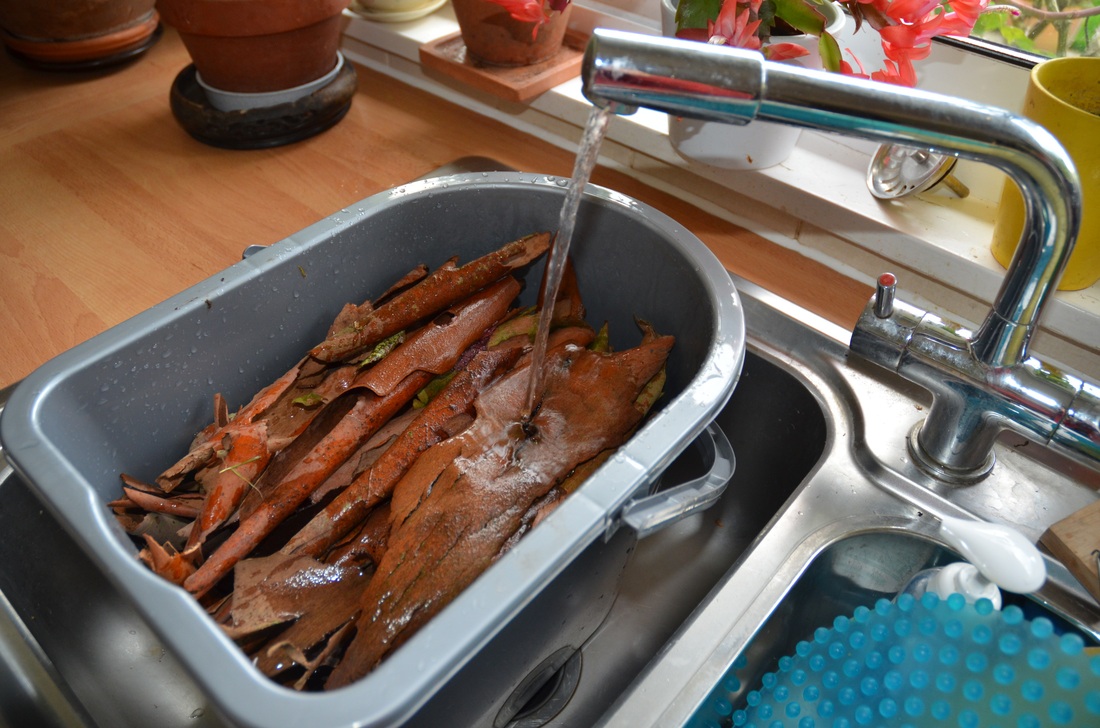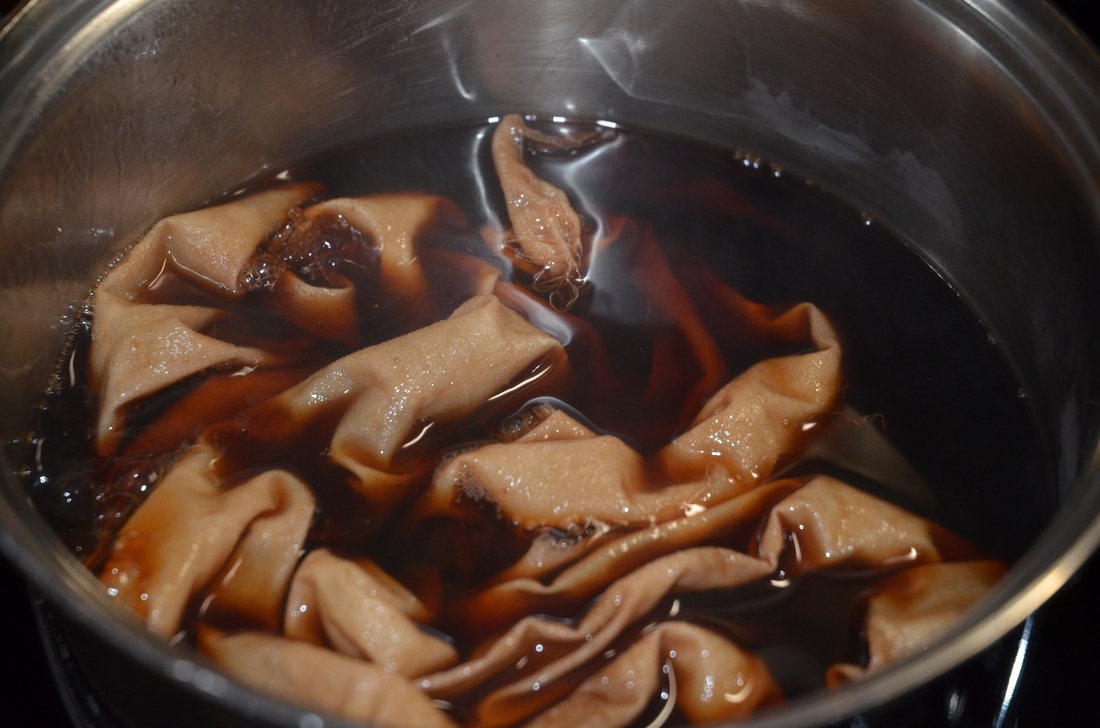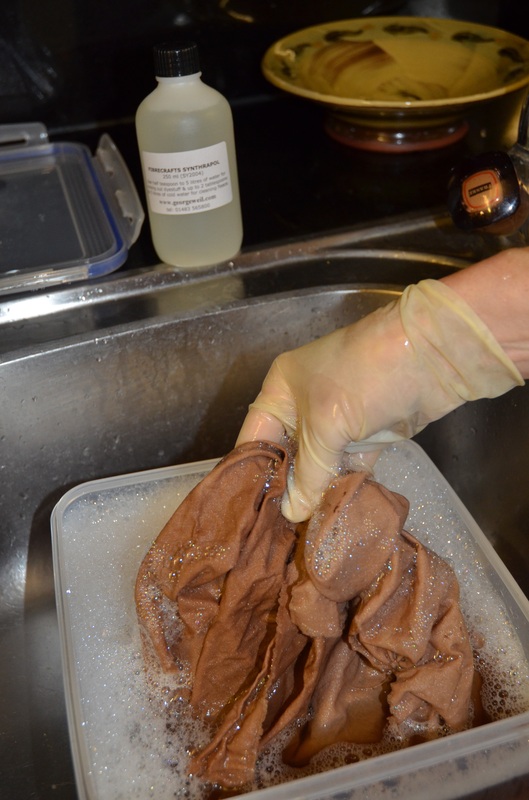|
While I was photographing Jack, I decided that those Japanese maple leaves would be one of my first natural dyestuffs, so I collected a very large amount in a stainless steel pot. I covered the leaves with water and soaked them for about an hour. I then simmered the leaves for about 5 hours (covered) and left everything to cool overnight. The next day I strained out the leaves, (put them on the compost heap) and poured the reddish-brown broth into a plastic container. For another dyestuff, I gathered Eucalyptus bark that had dropped on the ground all around a tree in my garden (never remove bark from a living tree, it goes without saying). I soaked the bark in warm water overnight (some natural dyers soak bark for much longer but I was too impatient), then boiled it for about 8 hours the next day—a lovely aroma permeated the house. I let the bark soak in the water for a couple of days, then poured that dark brown solution into a separate plastic container. In the meantime, while the leaves and bark were cooking and soaking, I scoured several fat quarters of my 100% cotton fabric in a hot machine wash to prepare them for dyeing, and soaked them in Synthrapol for a few minutes before rinsing them in warm water. I then added a mordant to the fabrics by simmering them in an alum acetate solution for an hour, then leaving them in the solution overnight. A mordant is a chemical agent that adheres to both fibers and dye, binding them together; the term is derived from the Latin mordere, which means “to bite”. The next day I divided the Japanese maple leaf broth into 2 stainless steel pots (never again to be used for cooking!). I added a tablespoon of salt to one pot, and then immersed one fat quarter of the mordanted fabric into each pot. I simmered the fabrics for one hour, not letting the solutions come to a boil. I removed the fabrics from the pots, rinsed them under running water and soaked them in Synthrapol. I repeated this process with the Eucalyptus solution. Next time I'll show you the dyed fabrics and how they were affected by the salt.
0 Comments
|
Archives
March 2023
Categories
All
|




 RSS Feed
RSS Feed